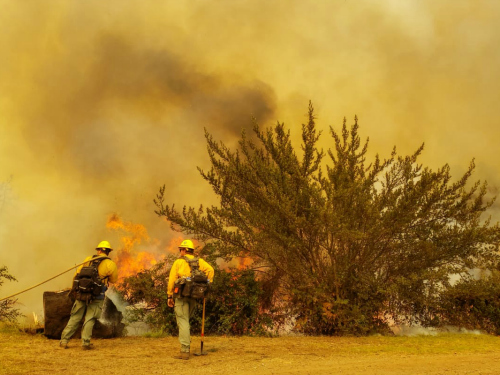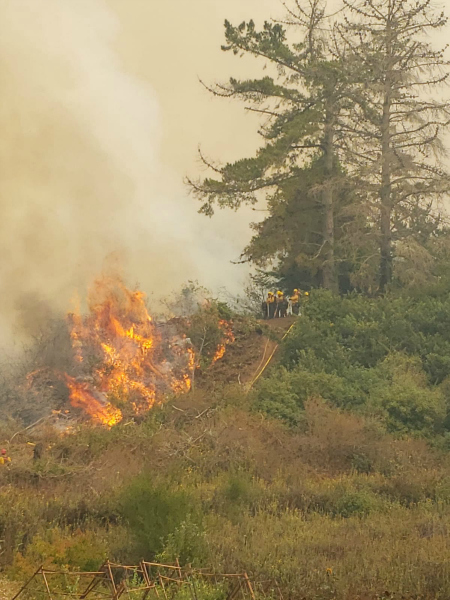Campus News
Research buildings saved as wildfire sweeps across Big Creek Natural Reserve
Fire preparedness and hard work by fast-moving fire crews and UC Santa Cruz staff is being credited for saving research and residential buildings at the Landels-Hill Big Creek Natural Reserve on the Big Sur coast.



Fire preparedness and hard work by fast-moving fire crews and UC Santa Cruz staff is being credited for saving research and residential buildings at the Landels-Hill Big Creek Natural Reserve on the Big Sur coast.
“All UC structures are still standing,” said Gage Dayton, director of UC Santa Cruz Natural Reserves, speaking at noon, Friday Aug. 21. A wildfire that began Tuesday night swept north to south over the 8,000 acres that UC Santa Cruz manages as part of the UC Natural Reserve system.
“The reserve is still burning,” Dayton said. “Some areas will be charred black. We won’t know the impact on the natural resources for some time.”
Called the Dolan Fire, the blaze is believed to have been started intentionally around 8 p.m. Tuesday in John Little State Nature Reserve about 3 miles north of the Big Creek entrance off Highway 1. By Saturday morning it had grown to more than 14,000 acres with 10% containment. The Monterey County Sheriff’s Office has arrested a 30-year-old Fresno man on suspicion of arson.
Dayton said the fire seemed to slow late Tuesday night then exploded overnight Wednesday, jumping Big Creek and burning into the Big Creek reserve where researchers and students work on a variety of projects ranging from sea otters to old growth redwoods, and coastal stream habitat. Three campgrounds, a research cabin, and a small laboratory/library are on site.
“The whole reserve was pretty much on fire, there was fire everywhere,” Dayton said Big Creek Director Mark Readdie told him.
“All staff are safe, they’ve been doing just an incredible job working hard to help support fire crews,” Dayton said.
He said Readdie and natural reserve staff members Sean McStay, Feynner Arias, Hadley Hargrove, Nora Grant, and Mackneal Byers helped support crews from CalFire, the U.S. Forest Service, and Big Sur volunteer firefighters, beginning in the early hours of Wednesday through Thursday to save a facility along Coyote Creek and other structures. Approximately 60 personnel were involved. Heavy smoke and rugged terrain prevented aerial attacks.
What really made a difference, Dayton said, was firefighting preparedness made in the past several years, including creating defensible space around buildings and installing sprinkler systems and reserve water tanks.
A 15,000-gallon tank installed at the Whale Point researcher cabin on the ridgeline helped power sprinklers that wetted down the structure and saved it, he said.
Fire is a natural part of the ecosystem, Dayton said. Two major fires in the past 35 years, one in 1985 and one in 1999, swept across the area. The reserve was missed by a major Big Sur fire in 2008.
“These areas burn and the land is resilient,” Dayton said. But many years of dry conditions and a buildup of fuel means hotter and more destructive fires, he said.
Update, August 24, 2020: Fires continue to burn in the area of Big Creek Natural Reserve, but all of the main UC facilities at the reserve remain standing. UCSC Natural Reserves Director Gage Dayton said it will probably be weeks before staff can assess the status of the entire reserve, including campgrounds and water storage infrastructure, adding, “We are all concerned about the reserve’s neighbors and friends in the area who may have lost structures in the fire.”
To support the rebuilding of Big Creek Reserve to open once again for students and researchers as a living laboratory and outdoor classroom—with a new opportunity to study the effects of fire—gifts can be made at connect.ucsc.edu/BigCreek.